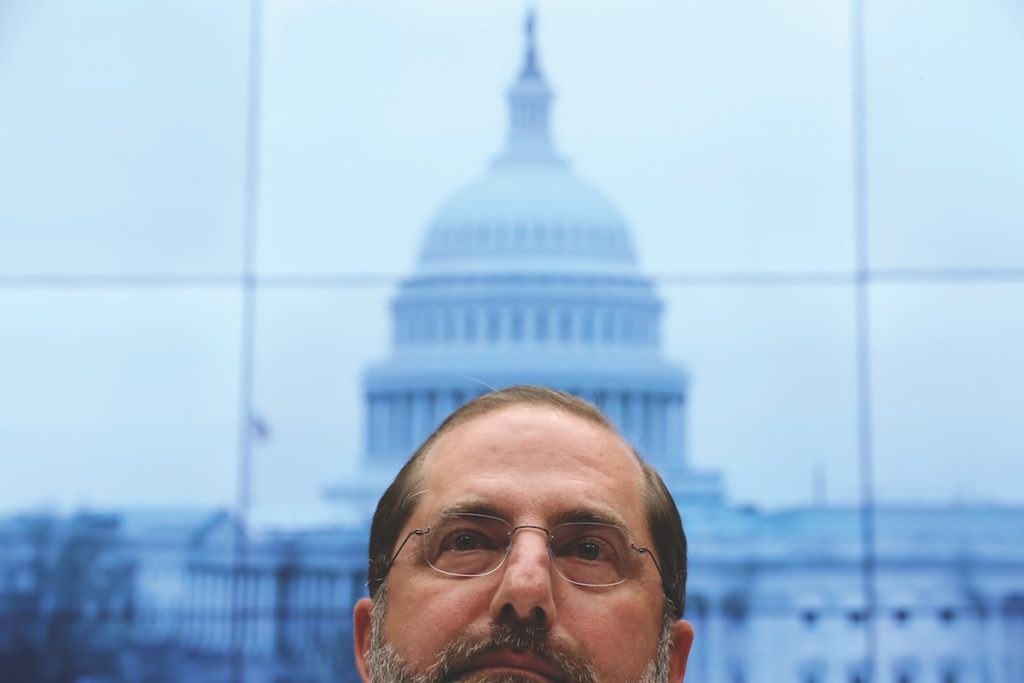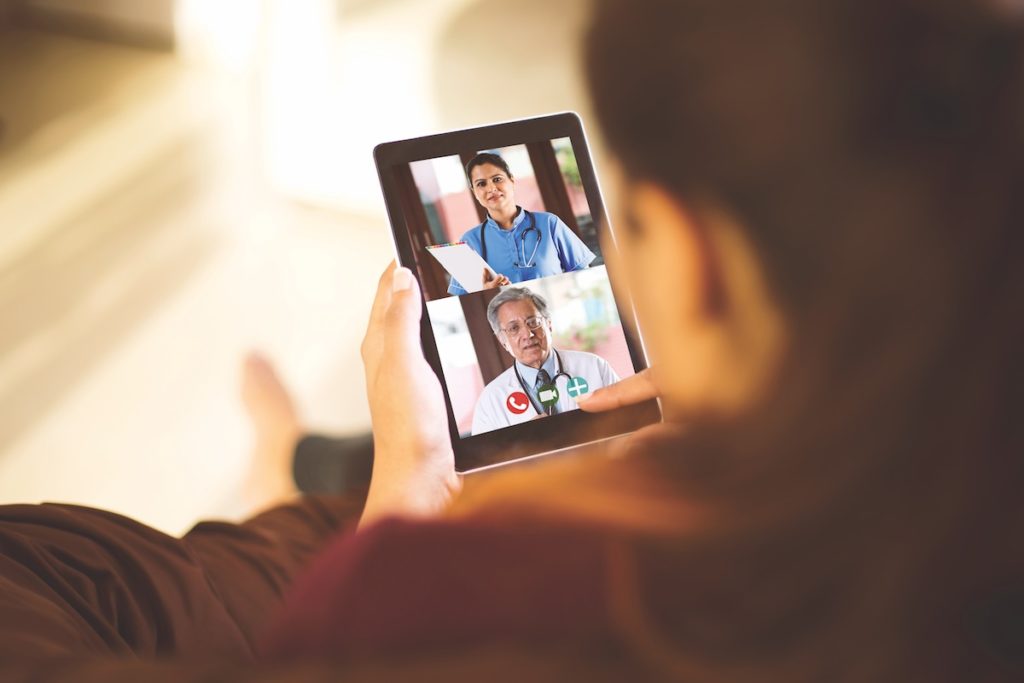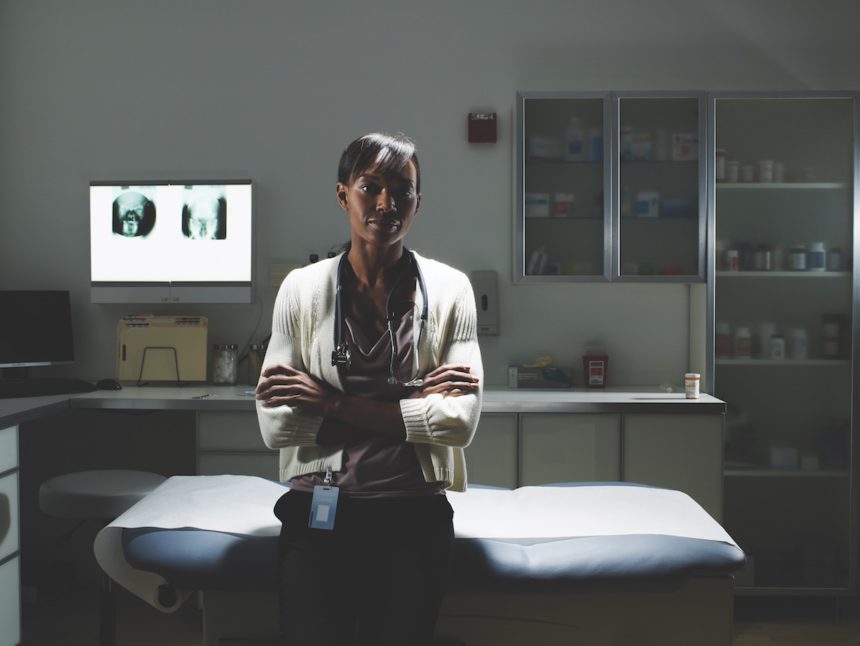Biopharma marketers have been consumed — you might say even a little obsessed — with reaching MDs and doctors of osteopathic medicine. But nurse practitioners (NP) and physician assistants (PA), despite not commanding quite the same level of attention as their professional counterparts, are quietly catching up to them in both prescribing and patient volume.
Given the strides they’ve made during the COVID-19 pandemic, the industry may want to reassess that attentional imbalance. “Pharma is in a bubble,” says Dave Mittman, a past president of the American Academy of Physician Assistants (AAPA). “And the bubble is that physicians are everything. That bubble busted a while ago, and no one really looked at the new bubble. Maybe it took COVID for that to happen.”
Over the last five months, NPs and PAs have benefited from a broadened scope of practice, as many states have eased supervision requirements that had tethered them to doctors. Governors in eight states suspended or waived certain practice requirements for PAs in response to the COVID-19 pandemic, per the AAPA. Some 22 governors did the same for NPs, according to the American Academy of Nurse Practitioners (AANP).
In some of the hardest-hit states where legislative collaboration/supervision requirements were removed, NPs and PAs left their normal practice settings and pitched in everywhere — from testing and ICUs to urgent care and ERs. To the extent that the pandemic has been a grand experiment in independence, it’s one which the clinicians say they passed with flying colors.
COVID-19 was “an opportunity for nurse practitioners to show we did just fine without legislative constraints. So give it up for NPs,” says Angela Golden, a past president of the AANP.
Ditto for PAs, Mittman adds. “What PAs want is, we don’t want anyone else in our legislation.”
To that end, the pandemic has merely accelerated what had already been an ongoing trend in many states and territories, even if it hadn’t been legislated: for NPs and PAs to operate autonomously. There are currently 290,000 NPs and 160,000 PAs in the U.S.
“Elimination of supervision requirements has been the goal for NPs for many years, and we’ve been steadily progressing that through the states,” Golden explains. Indeed, in 28 states and Washington, DC, NPs have been authorized to directly provide primary care services much like a doctor — and in most cases without physician oversight.
The PA profession is also moving in that direction, although it’s not as far along.
In most states, PAs are still required to have a supervisory or collaborative agreement with a physician in order to practice.
Of course, these guidelines vary. Some states have a supervisory language requirement, meaning that a physician has to be within a certain number of miles or agree to do a certain number of chart reviews. In other states, it’s nothing more than a piece of paper in the clinician’s drawer stating that the physician will collaborate when the NP or PA needs them to.
“Those are the requirements that, in my opinion, are the silliest, because my professional responsibility is to collaborate with other healthcare providers when the patients need it,” Golden scoffs. “I don’t need a law. That’s a professional responsibility.”
The rules, put in place decades ago, do not reflect current realities, clinicians say. For example, if a PA or NP is volunteering at a disaster site in another state, a physician may be unwilling to maintain the agreement, rendering the PA or NP unable to practice. In such instances, legislative requirements can be a barrier to access to care.

Moreover, at the time the requirements were enacted, more doctors owned their own practices, and PAs and physicians would often go into practice together. “They could really work as an amazing team,” Mittman notes.
On the other hand, today’s physician is more likely to be employed by someone else. “What happens to the PA/physician relationship? It’s gone,” Mittman continues. “I’m just another peg to fill a hole, and so is the physician next to me and the NP next to her. It’s all, ‘We need you to see patients.’ There’s not that sense of, ‘You rub my back, I’ll rub yours.’”
This is why PAs and NPs have been seeking to break free of these constraints and modernize. In fact, a reimagining of the healthcare workforce had been underway long before COVID. It has been driven by, among other things, the shift to value-based payment and the triple aim of better care and patient satisfaction at a lower cost.
The rise of retail clinics, often staffed by NPs or PAs, has been but one byproduct of a transforming health system and a consolidation of the provider, payer and pharmacy benefit manager (PBM) landscape. The $69 billion CVS/Aetna merger of 2018, for example, was spurred in part by CVS’ desire to steer Aetna’s members to its 1,100 MinuteClinics.
Now, both NPs and PAs prescribe more pharmacologic agents in some therapeutic areas and rival doctors in the number of patients seen. Additionally, many are becoming eligible for direct reimbursement from private insurers.
In March, when Health and Human Services Secretary Alex Azar encouraged governors to lift the oversight requirements on clinicians, not every state took him up on the offer. California was one that resisted, and it has since been reported that the Golden State is likely to maintain supervision constraints, due largely to its powerful doctors’ lobby.
To say that I can’t do family practice without a physician being part of that team is ludicrous. The research is very clear that is not true.
Angela Golden, American Academy of Nurse Practitioners
Even in those states that did waive rules, a permanent easing shouldn’t be a foregone conclusion. Some physician groups are withholding judgment until the COVID contributions of NPs and PAs can be properly assessed.
“For us, it’s not as simple as ‘We did this for the public health emergency; let’s just make it permanent,’” says American Academy of Family Physicians EVP and CEO Shawn Martin. “The right approach is to evaluate what was positive and build on those things, but not necessarily just create pathways in areas where maybe it wasn’t a positive impact for patients and the healthcare system.”
Overall, the AAFP’s approach is that every member of the team — whether an NP, PA, nurse or physician — is valuable but not interchangeable. “We should stop viewing them as a replacement strategy, like PAs and NPs can replace physicians,” Martin explains. “The point is for physicians to do the things that they’re uniquely available and capable of doing based upon education and training throughout the team, and that the team is unified in its approach to providing comprehensive patient care.”
To that end, AAFP supports a vision of the primary care team with a physician leading the way. “Our official policy is that primary care teams should be inclusive,” Martin adds. “Everybody should contribute to the betterment of patient care, but the team is led by a physician.”
Not surprisingly, that view doesn’t sit well with Golden. “I personally will never be an advocate of the idea that a physician must lead a team,” she counters. What resonates more with NPs is the belief that the ultimate leader for patient care is the patient, a position affirmed by the American College of Cardiology (ACC).
Golden, who runs a family practice and another specializing in the treatment of obesity, stresses that she has “the greatest respect” for her physician colleagues and their integral role in patient care. “NPs don’t go in and do surgery or cardiovascular interventions,” she notes, admitting that “there are times where you say, ‘OK, let’s respect each other and understand that we may not be able to come to an agreement on this.’”
She adds a major caveat. “To say that I can’t do family practice without a physician being part of that team is ludicrous. The research is very clear that is not true.”

Martin, too, acknowledges that such arguments at the organizational level are often different than the realities at the practice level. “Our members are out there collaborating everyday with NPs, PAs, pharmacists and others, and it’s working quite well,” he says. “The disagreements at the organizational level tend to get amplified, but the reality on the ground is that a lot of really good practices have figured this out already.”
One of the biggest hurdles PAs have faced in working to change legislation at the state level is the misperception that they are literally assistants to physicians. This misperception may also have colored pharma’s approach to providing medical information, education and other resources to PAs and NPs. In light of how the roles have evolved, industry may need to reassess this two-tiered thinking.
Clinicians have some very pointed advice on the matter. First, similar to the laws around supervision and collaboration, the industry’s semantic playbook appears to have been written during a very different time.
“Pharma has always viewed us as ancillary personnel, honestly,” Mittman points out. “If you look at the advertising, even in direct-to-consumer, it’s still, ‘Talk to your doctor or pharmacist.’ Well, there are 400,000 people you can ‘talk to’ who can write a prescription, and you just dissed them. Why can’t you say ‘prescriber’?”
Golden agrees, adding. “Anything that disidentifies me — that makes me invisible — is a problem. When I am grouped with another group, even as an advanced practice provider [APP], I’ve still been disidentified.” Acceptable terms include “prescriber” or “clinician,” she explains. Phrasing like “physicians and APPs” or “physicians and extenders and mid-level providers” is not.
“If we’re going to do that, then call us all out: ‘physicians, NPs and PAs.’ I even timed it once. It doesn’t take that much longer in the advertising,” Golden adds.
As far as educational preferences, NPs and PAs were spending a lot of time with symposia, live congresses and rep details prior to the pandemic. In an eventual post-COVID era, more than 40% are hoping to receive conference-style content via webcasts and email, according to a June survey by Point of Care Network (POCN), which provides content for NPs and PAs. Just under half of respondents say they are open to virtual rep visits with meal delivery.
NPs and PAs tell MM+M they want the same scientific information and new product alerts provided to their physician colleagues (see sidebar). “When there’s an opportunity for me to get educational supplies, most pharma reps are surprised at how much that means to me,” Golden notes. “If I can get handouts or apps that help explain a disease process, I don’t care if it’s branded. Most NPs love anything that helps them teach their patients because at heart, due to our nursing background, we are teachers.”
It’s important to keep in mind that remote patient visits increased dramatically for NPs and PAs during COVID. Some 95% believe telehealth has impacted their daily interaction with patients, POCN found, while 88% say it has affected how they run their practices. That’s yet another trend that mirrors their physician counterparts.
Both Mittman and Golden are sanguine about the possibility of an accelerated move toward full practice authority. “There are states where it’s going to be a longer haul, like we all expected from the get-go,” Golden shrugs. “We’ll use the experience from COVID during testimony.”
Mittman adds that the evolution and advancement of both professions will almost certainly continue. “There will be another group of medical care providers that pharma will have to interact with, but we’ll have all the rights and privileges that anyone else has in that industry,” he says. “We won’t have to worry about, ‘Can I leave samples or do this or do that?’ All of that is going to get modernized.”

NPs and PAs Speak Up
Want to know what nurse practitioners and physician assistants want from pharma? Just ask them. Courtesy of Angela Golden and Dave Mittman, who ran the question by their NP and PA colleagues, here are some verbatim responses. Answers have been lightly edited for length and clarity.
Physician assistants
“Best method for me is to email studies and send patient educational materials. We are always in dire need of this.”
“Anything that contributes to our education and is a resource to us or our patients is useful and impactful. Examples: ‘Here’s a handout about obesity you can give your patients,’ ‘Thanks for listening to my chat, here’s a coupon to get a free membership for Epocrates,’ ‘Thanks for watching this one-hour webinar on this new med. We will donate $25 to the AAPA.’”
“We have reps coming to our office virtually. There is a computer set up in the break room and they catch us when we go in to get the lunch they provide.”
“Direct-to-provider marketing is best…. We may skip the hokey emails, but free webinars are always looked at.”
“Regardless of the medium used, the most effective way of disseminating info is via short, brief engagements.”
“My email inbox has never been fuller — and I’m getting the same headlines from 10 different companies (AAPA, Medscape, Helio, Doximity, etc.). I barely open any of them because it’s overwhelming…. If I were in pharma, I would be trying to give grant money to organizations to develop their own CME programming about my topic.”
“I have personal relationships with all my reps, so they have my cell number and text me with updates.”
“I just received some marketing, which came with a very non-biased article on the new CGRP-6 peptide drugs for migraine headaches …. That is what I think most PAs would like to see.”
Nurse Practitioners
“I think Q&As with pharmacists might be a good idea. I don’t really have time for webinars, but I would make time for a Q&A with a PharmD.”
“Prerecorded information might be the easiest, as we can flex around our schedule with follow-up Q&A at a set time.”
“I prefer to be contacted by email to set up a video chat at a convenient time. Ten minutes maybe? I don’t like drop-ins.”
Some reps have reached out to me personally to check on how things are and ask how they can help. That personal touch is nice.”
“If they want to do a virtual dinner meeting, perhaps they could offer a voucher at a local restaurant. Let’s face it: The majority of people who went to those dinners were there for the food.”
“I’ve been getting pharma postcards and brochures that are typically sent out prior to a national conference. It’s pricey for them but less annoying than email.”
“My Novo Nordisk medical liaison is organizing a virtual journal club with our Seattle group. Once the pan-demic is over, those could be done in person or in a hybrid model.”
“Please consider sponsoring a table with NP organizations at their virtual events.”
“I enjoy hearing about pharma stuff on podcasts. I’ll look at reviews occasionally on med journals. I usually don’t look at emails about medications, because I get too many of them.”
“Reps are making an effort and sending emails to ask one, how we are; two, if there are needs; and three, to keep me updated on their situation. Many of them are people I’ve known for years, so I appreciate knowing they are okay. That’s the personal part sometimes forgotten by the corporations.”
From the October 01, 2020 Issue of MM+M - Medical Marketing and Media







